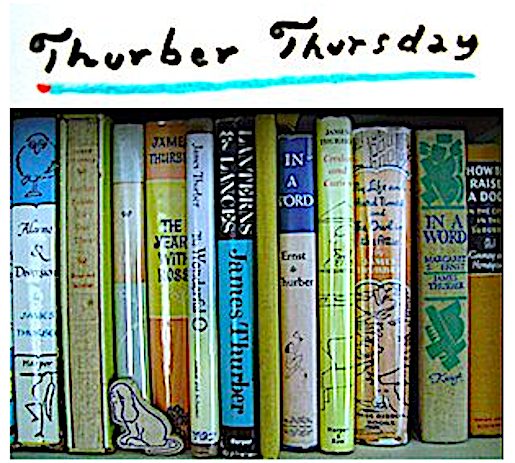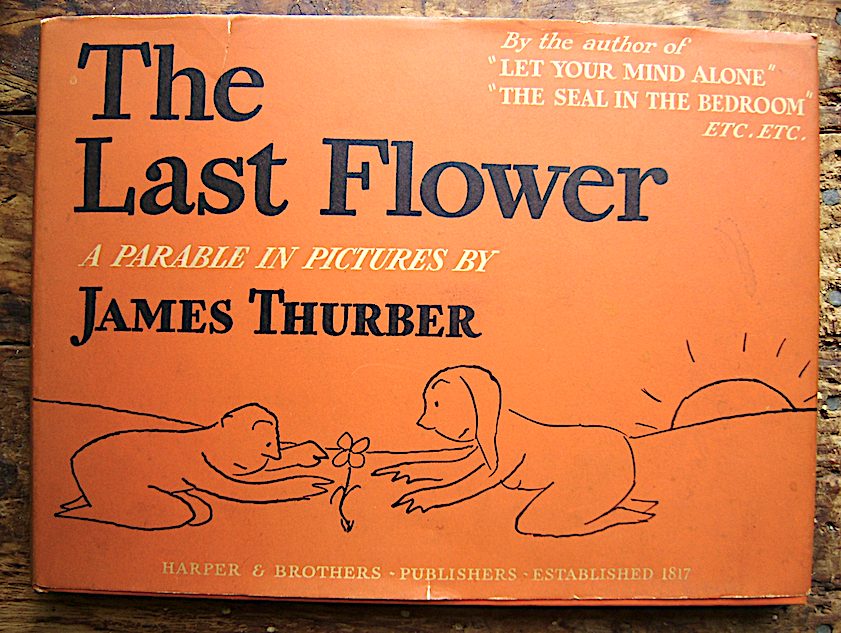Thurber’s Favorite Thurber Book (And E.B. White’s Favorite Thurber Book)
— This account derived from Burton Bernstein’s Thurber: A Biography, and Harrison Kinney’s James Thurber: His Life and Hard Times, and Edwin Bowden’s James Thurber: A Bibliography
It was September of 1939; Germany had invaded Poland the first day of the month. Thurber and his wife, Helen, were staying at The Algonquin Hotel in Manhattan. According to Helen, Thurber was “depressed and shaken by war.”
Here’s Thurber’s account of one particular evening during that stay: “After Mrs. Thurber had gone to bed in our suite at the Algonguin I set about doing some drawings in the next room, and after an hour’s silence she called to me. ‘What are you doing?’ I said, ‘I’ve just finished a book.’ The Last Flower. It took some three hours of course, to ink those drawings in.”
Mr. Bernstein summarizes the book:
“a parable in pictures about … the world’s total devastation of civilization and art and love and soldiers…save for one man, one woman, and one flower.”
After Thurber showed a number of friends the manuscript, he wrote to his publisher that [a] 100 friends were “inspired” to “make affidavits before notaries public that nothing like it had ever come from the hand of Thurber before.” Swearing before a notary was a Thurberesque flourish of course, but the rest, I’m quite sure, was real. Nothing like it had come from Thurber before. Harper rush released The Last Flower, publishing it in November of ’39.
Mr. Bernstein writes in his Thurber biography that Helen Thurber said it was her husband’s favorite book of all he’d published.
E.B. White wrote of The Last Flower in his New Yorker obituary for Thurber:
“…the book of his I like the best is ‘The Last Flower.’ In it you will find his faith in the renewal of life, his feelings for the beauty and fragility of life on earth.”


